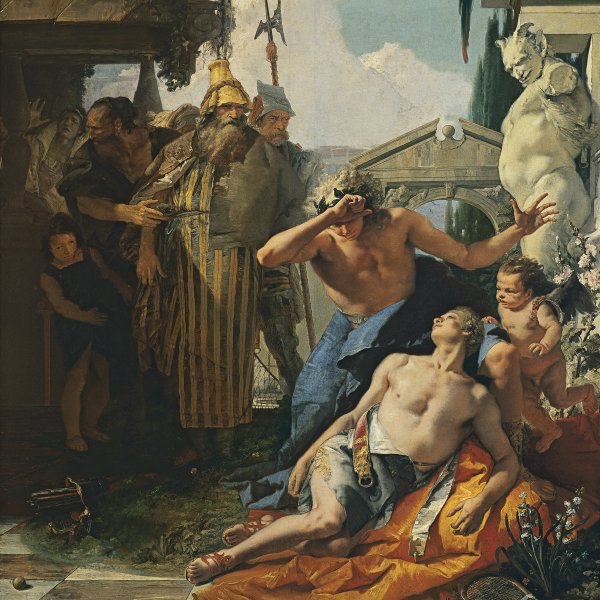Giambattista Tiepolo
Venice, 1696-Madrid, 1770
Tiepolo was a Venetian artist who trained with the history painter Gregorio Lazzarini. He studied and assimilated the style of Veronese, Sebastiano Ricci and Giambattista Piazzetta and the latter’s use of chiaroscuro is evident in his early works. Tiepolo’s first important commission was the decoration of the Episcopal palace in Udine, executed between 1726 and 1729, in which he abandoned his earlier use of dark tones and moved towards a bright, clear palette and a dramatic use of perspective with an intense type of illumination. This approach would be evident in the remainder of his oeuvre. His next decorative scheme was for the Colleoni chapel in Bergamo (1732–33), followed by canvases for the church of the Gesuati (1737–39) in Venice, and the decoration of the Palazzo Labia in that city. Between 1750 and 1753 he was in Würzburg, working on the decoration of the Prince-Bishop’s residence. In 1756 Tiepolo returned to Venice and became president of the Accademia. One year later he was involved in the decoration of the Villa Valmarana and that of the Ca’Rezzonico. In 1762 he is documented in Madrid, where he was summoned by Charles III of Spain to work on the royal palace. Tiepolo was equally skilled in fresco and easel painting and was a remarkable draughtsman and printmaker. Among his series of prints were the Capriccios of 1743 and the Scherzi. He was assisted on his major projects by his sons Giandomenico and Lorenzo and by Gerolamo Mengozzi while the latter also assisted him on the execution of some of the architectural settings in his fresco cycles. Tiepolo’s creativity and invention and the skill of the theatrical settings used in his compositions, all painted with a rich, brilliant palette, make him the leading figure in 18th-century decorative painting and one of the most outstanding artists of that century.





